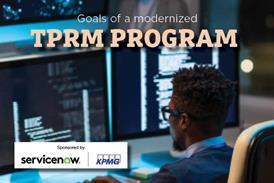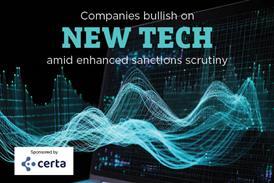Rule amendments proposed by the Securities and Exchange Commission (SEC) in March would require climate-related disclosures by public companies and include new attestation requirements for accelerated and large accelerated filers.
The SEC’s goal in issuing the proposal, which is nearly 500 pages long, is to provide “consistent, comparable, and decision-useful information” for investors about climate-related risks under the umbrella of environmental, social, and governance (ESG) reporting.
Qualitative and quantitative disclosures would be added both inside and outside of financial statements under new Items 1504 and 1505 of Regulation S-K, and new sections of annual reports and registration statements would be required.
“This is a big deal because we knew it was coming but not what it would look like,” said Damon Busse, partner at accounting firm Baker Tilly. “Now, a lot of analysis needs to be done.
“Because not all of the new disclosures will be subject to attestation, it will be important for registrants and their providers to structure disclosures appropriately to be clear as to what is and is not subject to attestation.”
Proposed disclosures
New financial statement disclosures would be subject to audit and internal controls over financial reporting, noted Ruth Tang, audit partner and ESG reporting and assurance leader for KPMG.
Financial statements would include a note disclosing climate-related metrics, including amounts of negative and positive impacts separately for each line of the financial statements and disclosure of amounts by physical risks and transition risks and the expenditures expensed and capitalized for each.
Proposed disclosure is required when the aggregate dollar amount of the impact is greater than 1 percent of the related financial statement line item. In addition, disclosures would be required of climate-related risks and uncertainties related to estimates and assumptions used.
“Companies will find it difficult to get assurance without first having a diagnostic assessing the current state of their related processes and controls and their reporting readiness for these type of metrics.”
Ruth Tang, Audit Partner and ESG Reporting and Assurance Leader, KPMG
“The biggest surprise for me was the required disclosures inside the financial statements, particularly the 1 percent bright line threshold for line-by-line financial statement impact,” Busse said. He noted it is rare for the SEC to provide bright line materiality thresholds that are not the same as how management and auditors might think about materiality.
Other proposed disclosures include a discussion of management and board oversight of risks; the process for risk identification, assessment, and management; whether risks have had (or are likely to have) a material impact on the business or financial statements or have affected the company’s strategy and business model; and description of any transition plan to reduce risks.
In addition, there are proposed disclosures of metrics and methodology about Scope 1 (direct), Scope 2 (indirect produced by purchased energy), and Scope 3 (supply chain/vendors) greenhouse gas (GHG) emissions and information about the company’s climate-related targets, including the scope, timeline, and data used to measure progress and update the plan each year.
The disclosures would be phased in over different effective dates, depending on when the proposed rules are adopted by the SEC. If the rules are finalized by December 2022, disclosures would be required for calendar year-end filers as follows:
- For large accelerated filers, fiscal year 2023 (FY2024 for Scope 3 disclosures, if material);
- For accelerated and nonaccelerated filers, FY2024 (FY2025 for Scope 3 disclosures, if material); and
- For smaller reporting companies, FY2025 (exempt from Scope 3 disclosures).
Attestation
Assurance requirements are for Scope 1 and 2 GHG emissions disclosures outside of the financial statements for accelerated and large accelerated filers. There is no attestation requirement for Scope 3 disclosures, which are also subject to a safe harbor provision for affected registrants.
The proposed attestation requirements are based on the American Institute of Certified Public Accountants’ (AICPA) model, which defines the types of attestation engagement as either:
- Limited assurance (state whether the provider is aware of any material modifications that should be made to the subject matter for the disclosure to be in accordance with, or based on, the requirements in S-K Item 1504 or for the assertion about the subject matter to be fairly stated), or
- Reasonable assurance (provide an opinion about whether the subject matter is in accordance with, or based on, the requirements in S-K Item 1504 in all material respects or that the assertion about the subject matter is fairly stated in all material respects).
“Limited assurance is a negative statement, akin to a review of financial statements in Form 10-Q, while reasonable assurance is an affirmative opinion about fair presentation, like an audit of financial statements or internal control over financial reporting,” Busse noted.
“Limited assurance … focuses on whether there are inconsistencies with the framework and there is very limited substantive testing, while reasonable assurance will be at the examination level without evaluation of internal controls over financial reporting,” Tang said.
There is a proposed phase-in period for attestation of disclosures. The effective dates are not yet set, but the proposal includes illustrative dates if the rules are finalized by December 2022.
For calendar year-end filers, limited assurance attestation would be required for large accelerated filers for FY2024 and 2025, with reasonable assurance required for FY2026 and beyond. For accelerated filers, limited assurance would be required for FY2025 and 2026, with reasonable assurance required for FY2027 and beyond. No assurance is required for other filers.
Who can provide assurance?
The proposal does not require the attestation provider to be a CPA firm or use any particular professional standard framework, but it does include eligibility criteria, including having relevant knowledge and expertise about GHG emissions, a system of quality control, and being independent.
“The provider can be, but is not required to be, the same as the financial statement auditor,” Busse said. “The SEC wanted an open marketplace for these services.”
“There are many other types of firms, like engineers, that have been in business for years and help companies calculate and verify these metrics, but it’s important for companies to think about who is in the best position to provide assurance,” Tang said.
Busse and Tang expect many auditors of accelerated and large accelerated filers will likely provide climate-related attestation because they have institutional knowledge and familiarity with the company and its processes and controls, understanding of the AICPA’s attestation standards, and a system of quality control.
Busse opined some non-CPA firms might opt out of attestation and instead provide advisory services in this area. “Assurance providers have to go through the client acceptance process and be comfortable that management and the board can be prepared and take responsibility for the information being reported,” he said. “They also need to meet the independence standards in Regulation S-X Rule 2-01, so they can’t help management and also provide assurance.”
Readiness
“Companies need to put processes and policies in place to identify and monitor the required metrics and a system of quality control to make sure the disclosures are complete and accurate. Most companies are not doing this today,” Tang said. “Companies will find it difficult to get assurance without first having a diagnostic assessing the current state of their related processes and controls and their reporting readiness for these type of metrics.”
One of the challenges of the proposed disclosures and attestations relates to board oversight and S-K Item 1501’s requirements for disclosures about the expertise of the board and how it oversees climate-related risks.
“There is a learning curve, and this is an area where there may be additional work to do even for companies making some climate disclosures today,” Busse said. “There may be a talent constraint challenge. This is a relatively new space, and the current board may not have the expertise to oversee the new disclosures, so there may be a need to augment the current board.”
“Companies already reporting ESG information should make sure the ESG team within the organization is beginning to collaborate with the financial reporting and accounting team because the information will reside in the 10-K,” Tang said.
The public comment period for the proposed rules was extended to June 17, and the SEC will vote on issuing a final rule after reviewing feedback. “Registrants’ management and their boards should not wait for the final rule but should take the time to begin to understand how the SEC is thinking about all of this,” Busse recommended.
Tang agreed. “This is the first proposed set of rules out there. Companies must understand where regulation is headed, as regulators around the world are seeking similar types of disclosures,” she said.





















No comments yet